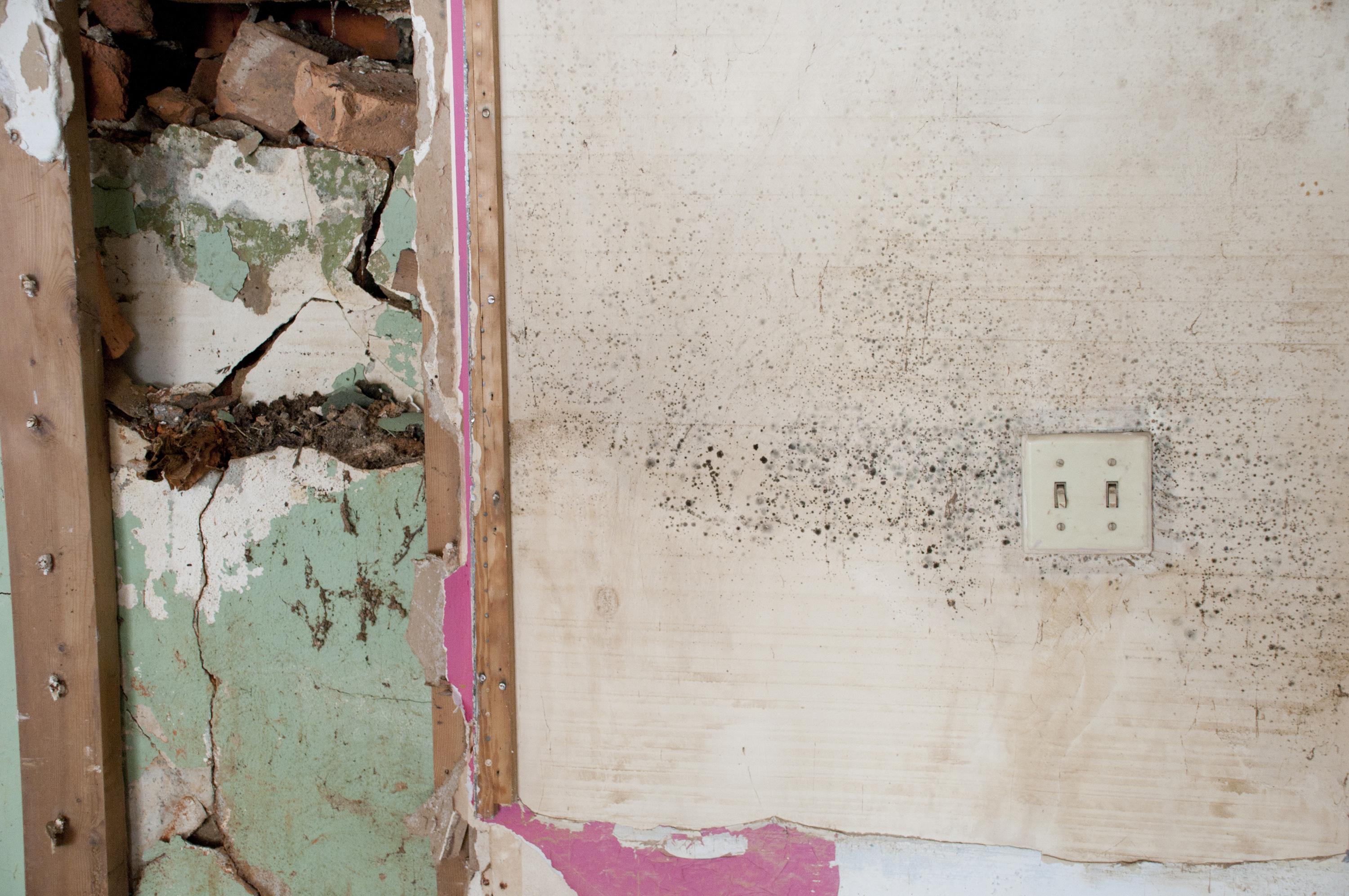Mold Around/Behind Electrical Outlets & Light Switches
People usually do not discover that you have mold behind their power outlets until they take the outlet cover off. If you discover mold, you will want to address it right away to prevent further spread of the mold spores and protect your property and family.
This article will take you through the dangers of mold, and some steps you can take to remediate it.

What are the Dangers of Mold?
Exposure to mold can cause serious side effects to those exposed, and can be especially dangerous to those who may have a weakened or compromised immune system such as infants, elderly and sick individuals.
Mold around light switches in your home can cause you and your family members to experience many negative side effects. Some common respiratory issues associated with exposure to mold can include: sneezing, coughing, trouble or difficulty breathing, watery/itchy eyes, dizziness and vertigo, sore throat and more. Exposure to black mold will affect different individuals to varying degrees. An individual who has a pre-existing condition, like asthma, will experience the negative effects of exposure to mold more than someone who is otherwise in a healthy condition.
Mold not only affects the humans in your household, but also affects pets as they are susceptible to its effects too.
What Causes Mold to to Grow Around Electrical Outlets?
Electrical outlets may seem like an odd place for mold to grow, but to the contrary, this is quite common. Why? Because mold needs a few key things to be able to grow and prosper; they need moisture, darkness and available organic materials to feed off.
Mold around electrical outlets is a very common occurrence, especially in rooms of the home that are subjected to moisture on a regular basis and not ventilated properly. Your bathroom, kitchen and basement or the most likely areas of your home where you could potentially discover mold around light switches due to their regular exposure to moisture.
How to Identify Black Mold Behind Outlets
If you suspect that there may be mold hiding behind your electrical outlets, you will want to do some investigating immediately. Taking the outlet covers off of light switches and power outlets in your home is a fairly easy task, but one that should be done with caution as there is always the risk of electrocution when working with electrical components.
Start by using a screwdriver to remove the covers from the light switches and outlets in your home. Once the cover is off, if there is black mold already present, you should be able to tell right away. Mold may look like a slimy, black strand or could be black dots. Sometimes, black mold can also have a fuzzy appearance.
If you can’t visibly see the mold, you will still want to check around the outlets to see if the area feels damp. If the area behind the outlet is damp, it may be the perfect place for mold to begin growing even if it hasn’t started yet. We also recommend buying a mold testing kit like this one found on Amazon. Mold testing kits will allow the homeowner to check for the presence of mold spores even if they are not visible. You can learn more about how to identify mold by reading this article.
Hiring a Professional Mold Removal Service
When it comes to mold in your home, you do not want to “cheap out.” In most cases, hiring an expert mold removal service to address the mold in your property is your safest bet. This will make sure that the mold is remediated properly, and the chances of it growing back are minimized. You can reach a local mold specialist near you by calling the number on our website for a free estimate.
Mold removal experts will use fans and HEPA filters to properly ventilate your home and prevent the spread of mold spores as they remove the mold from behind power outlets in your property. They take the utmost precautions when dealing with black mold around electrical outlets to ensure the safety of your home and family.
Average Cost of Mold Removal
The average cost of removing mold is going to be different for each situation. A small mold infestation that is confined to one room of your home may cost a few hundred dollars while a larger infestation can cost a couple of thousand, especially if infested building materials need to be removed and replaced.
How to Prevent Mold From Growing Again
The biggest factor in preventing mold from growing again behind outlets is to make sure that your home is properly ventilated and dry, especially in rooms like the bathroom that are constantly being exposed to moisture. Always use a vent fan while showering or keep your windows open to allow the moisture to escape instead of clinging to the walls and ceiling.
We also recommend that you invest in a HEPA filter, to help keep mold spores out of the air.
